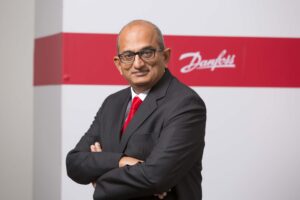
In a significant push towards global energy efficiency, driving advancements in cold chain and refrigeration systems could contribute to 30 per cent of the necessary energy savings by 2050 while simultaneously addressing food loss and waste. This was one of the critical highlights at the International Energy Agency’s (IEA) 9th Annual Global Conference on Energy Efficiency, currently taking place in Nairobi, Kenya.
The Urgency of Cold Chain Solutions in India and Africa
Countries like India and those in Sub-Saharan Africa are in dire need of efficient cold chain solutions. In Sub-Saharan Africa, up to 40 per cent of food is lost between farms and markets, with two-thirds of this loss occurring in the initial stages of the supply chain. Similarly, a recent Food and Agriculture Organization (FAO) study indicates that about 40 per cent of food in India is wasted due to inadequate cold storage solutions, including 30 per cent of fruits and vegetables that spoil in unsafe warehouses.
Cooling demand in India is projected to increase tenfold by 2030, driven by climate change and rapid urbanization. “Cooling Demand in India is expected to grow 10x by 2030, given the current climate change and rapid urbanization, which will in turn generate increased demand for food, water & energy. And it’s imperative to meet the same through sustainable means to help get us closer to our net zero ambitions. We are facilitating this expansion, by working towards bridging the tech and skill gap, helping farmers and businesses reduce food loss and improve food security in the Indian cold chain,” said Ravichandran Purushothaman, President, Danfoss India.
The Impact of Effective Refrigeration
Globally, approximately 14 per cent of food is lost due to a lack of effective refrigeration, enough to feed one billion people. Danfoss is emphasizing the urgent need for improved cold chain infrastructure. According to the first Global Cooling Watch Report launched at COP28, cooling demand could triple by 2050, potentially doubling greenhouse gas emissions, which would be more than the current annual emissions of the United States.
Sustainable Cooling Solutions
“The good news is that near zero emission cooling is possible. In fact, emissions in 2050 could be cut by 97 per cent with readily available technology including state-of-the-art energy efficiency. Kenya is one country where sustainable business models and financing solutions are key to delivering sustainable and reliable cold chains,” said Astrid Mozes, President, Regions, Danfoss.
The Loss2Value Project in Kenya, launched by Danish Church Aid and Danfoss, is a prime example of how localized initiatives can create significant impacts. The project aims to reduce post-harvest losses by demonstrating the value of energy-efficient cold storage to smallholder farmers and traders, fostering an ecosystem for sustainable business practices.
Leveraging Renewable Energy
India’s abundant solar and wind power can be harnessed to power cold chain warehouses and mobile storage facilities, reducing reliance on the grid and mitigating power outages. The adoption of sustainable electric trucks for transportation can further minimize operational costs and environmental impact.
By implementing sustainable business models and financing solutions, the initiative is empowering small and medium-sized enterprises and farmers to make positive changes. This not only addresses immediate challenges but also contributes to creating a lasting and resilient impact on the agricultural landscape in regions like Kenya and India.
As global temperatures, population growth, urbanization, and rising incomes drive the increased need for cooling, the importance of sustainable and efficient cold chain infrastructure cannot be overstated. The collaborative efforts and innovative solutions being discussed and implemented today are paving the way for a more sustainable and food-secure future.

